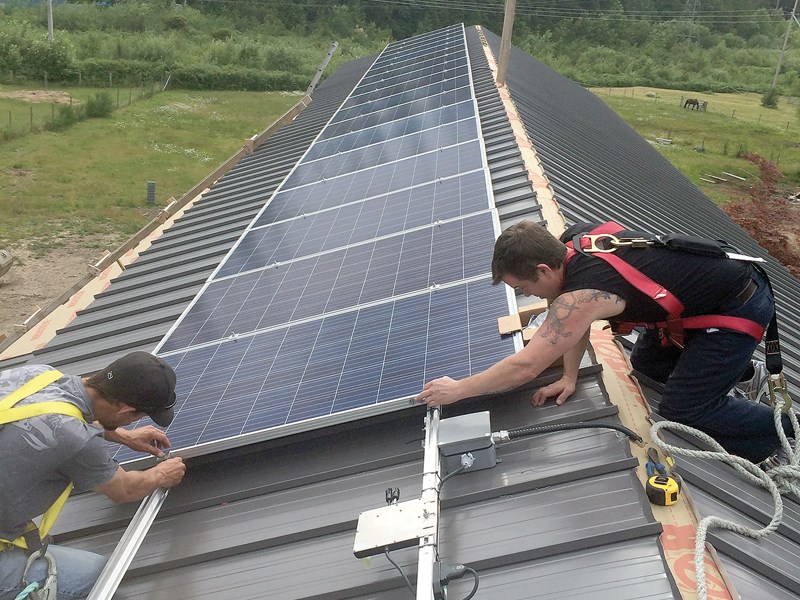With hydro rates continuing to rise and homeowners searching for green, cost-effective ways to generate power, solar-energy systems are becoming an increasingly attractive option.
“When people hear about solar power, most think of off-grid cabins on Powell Lake or Savary Island, but the focus has shifted to include traditional grid-tie homes,” says Valley Building Supplies chief operating officer Vic Spreeuw.
Previously, installation and generation costs combined were more than BC Hydro’s charge rate, but with that rate increasing annually, a point has been reached where those costs and rates have essentially reached parity.
“You can do the math now and actually find it does make financial sense,” explains Spreeuw. “It saves money every month and will pay off when a home is sold because it is something real estate agents say buyers consider now.”
BC Hydro rates increased by four per cent in April, the third jump in a five-year rate increase plan. The current rate for its step one consumption tier is $0.0829 per kilowatt-hour.
“The average Canadian household uses 10,000 kilowatt hours per year,” says Valley’s general manager Brandon Kennedy. “As soon as you get out of that first tier, you jump up to $0.12623 per kilowatt-hour, and hydro is raising that every year.”
While usage fluctuates throughout the year depending on the type of heat source, whether air conditioning is used and other family-specific consumption factors, homeowners can avoid paying those nearly double, second-tier rates during higher consumption periods by drawing power from Enphase Energy solar panel and inverter packages, which are currently available at Valley.
“In a perfect world you want enough panels so you never go into that second tier,” says Spreeuw. “You could chop your bill in half.”
Hydro bills can be analyzed to determine the appropriate number of panels required for each home. Each kilowatt generated by a solar-energy system is one less kilowatt consumers pay for on their hydro bill.
“You buy a certain number of panels based upon your budget or what you want to accomplish,” says Kennedy. “It’s more affordable than people might think.”
According to Spreeuw, installers can retrofit systems for older homes or incorporate them into new builds on any type of roof.
Valley works with customers and an electrician of their choice to ensure a smooth process. Local companies Home-N-All Electric and West Wind Electrical have each installed systems already.
“It does not cost anything to hook up with hydro,” says Spreeuw. “Smart meters already have two channels, one to calculate how much power is used and one to calculate how much net power you send back to the grid.”
Homeowners use power generated from their system first, then draw from the grid.
“If more power than they can use is produced, the meter measures the surplus that goes back to the grid,” says Kennedy.
Homeowners are able to track power generated by their entire array of panels through an online portal, so they can follow how much their system generates on a daily basis.
Reports indicate that, compared with hydro rates, a solar-panel system will pay for itself within the 25-year warranty period, says Kennedy.
“They have been out and still producing good power far beyond that,” he adds.
For an example of what a small display system of solar-energy panels can produce, go to bit.ly/valleysolar.
“We have a functional, four-panel system set up here at the store,” says Spreeuw. “By visiting that link, you can see live statistics on how much power that array is making.”
For more information about services and products available at Valley Building Supplies, call 604.485.9744 or go to valleybuildingsupplies.com. Business hours are 8 am-5 pm Monday to Saturday at 4290 Padgett Road.



